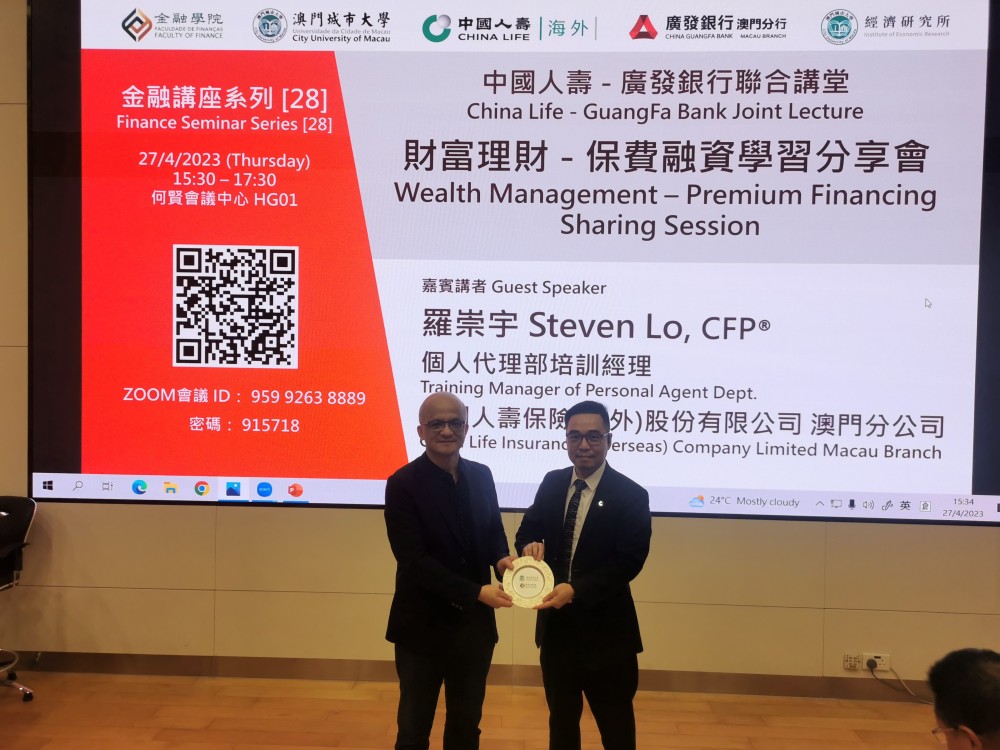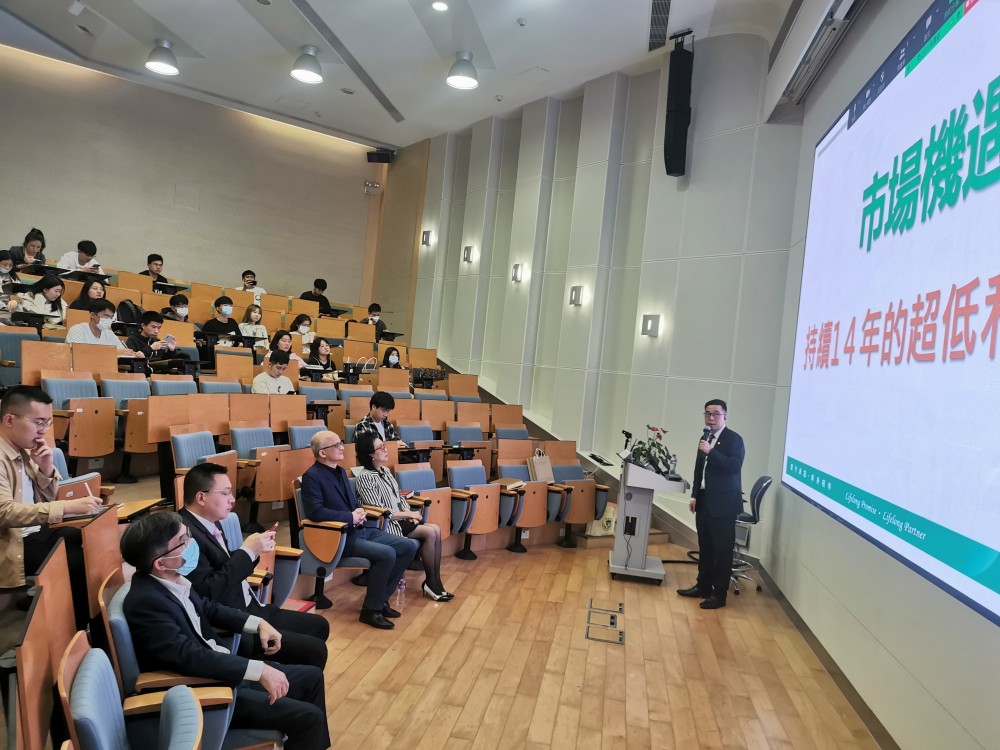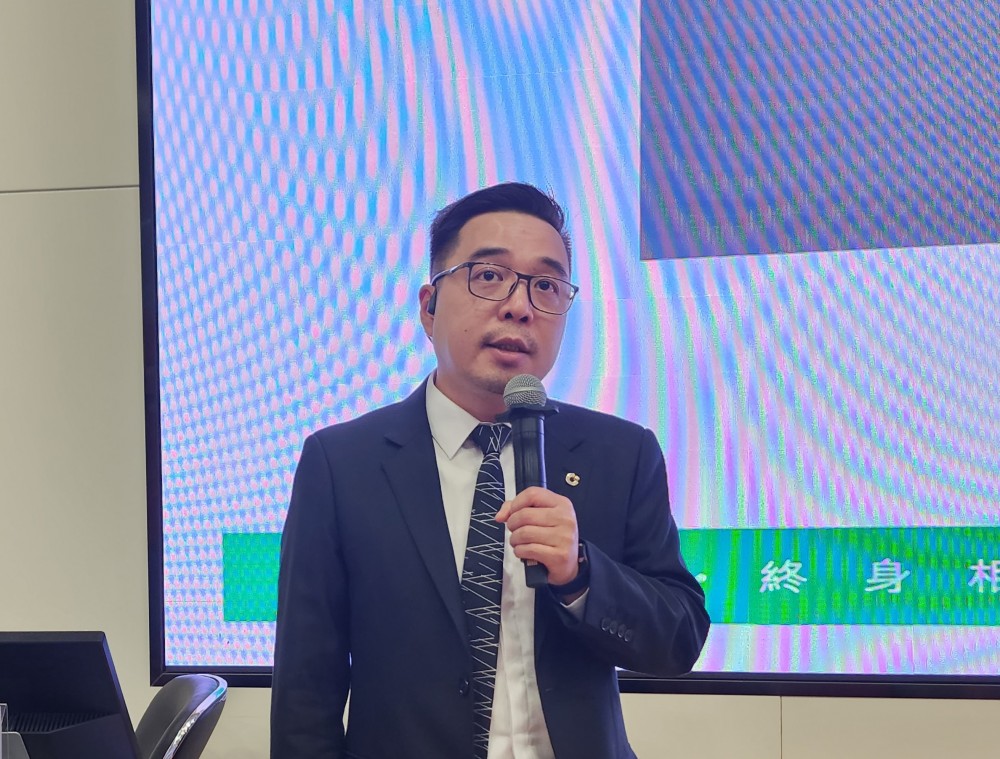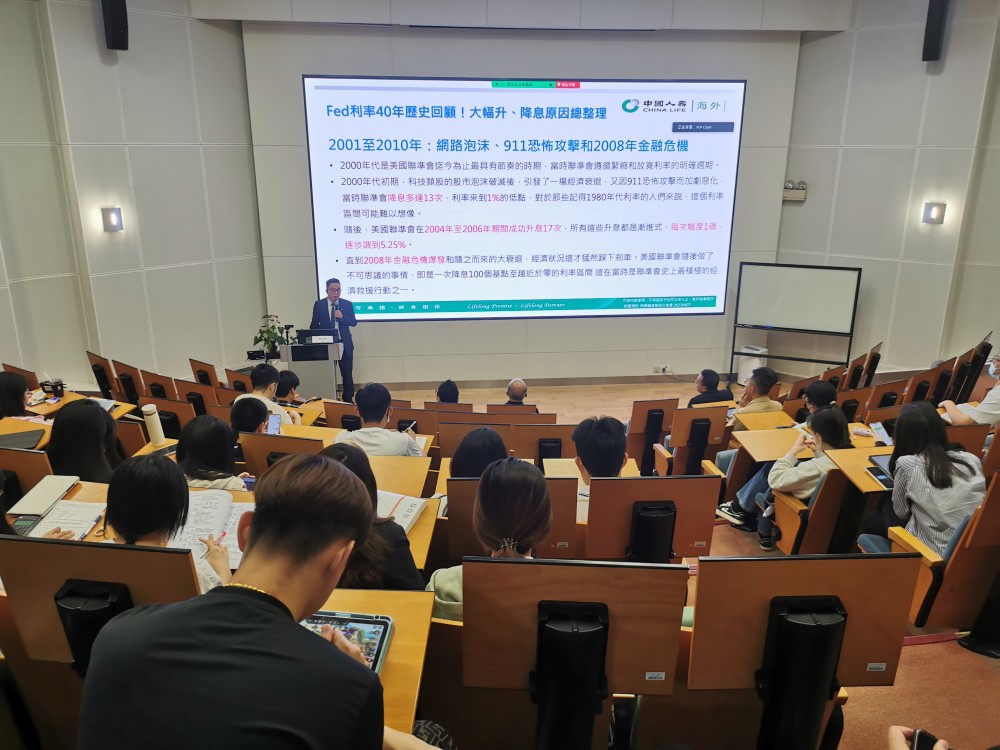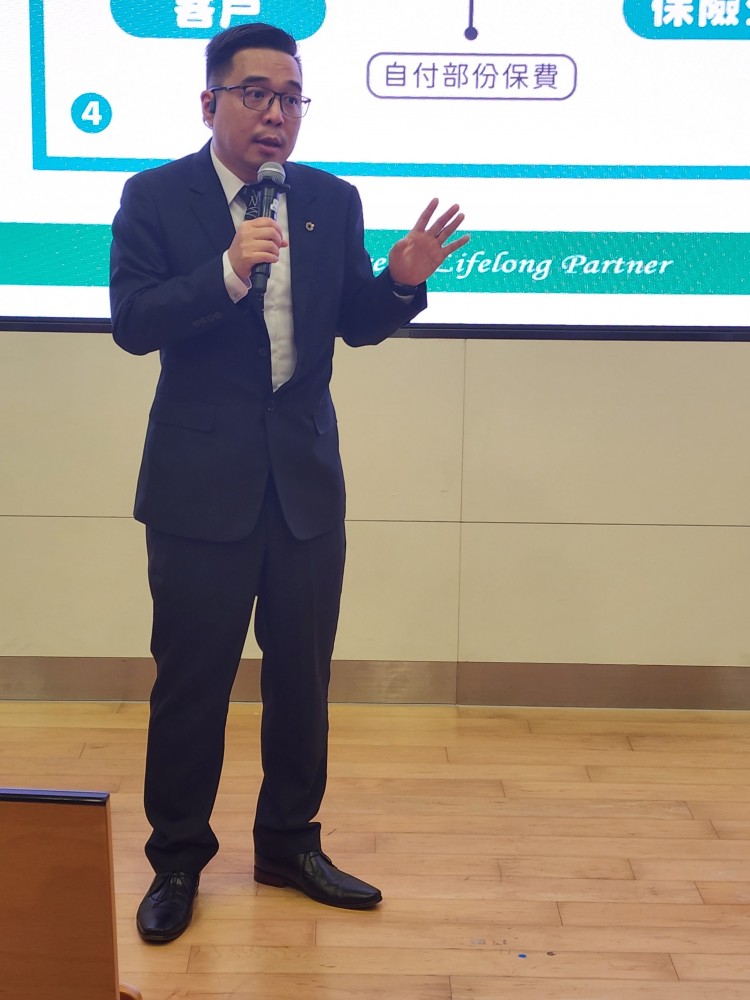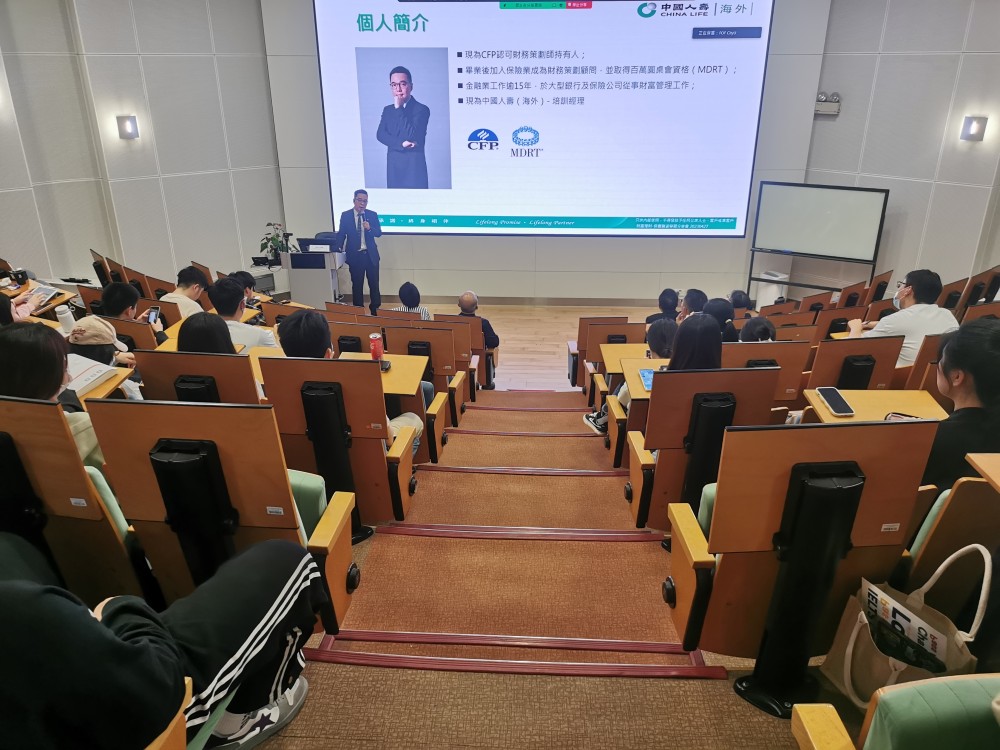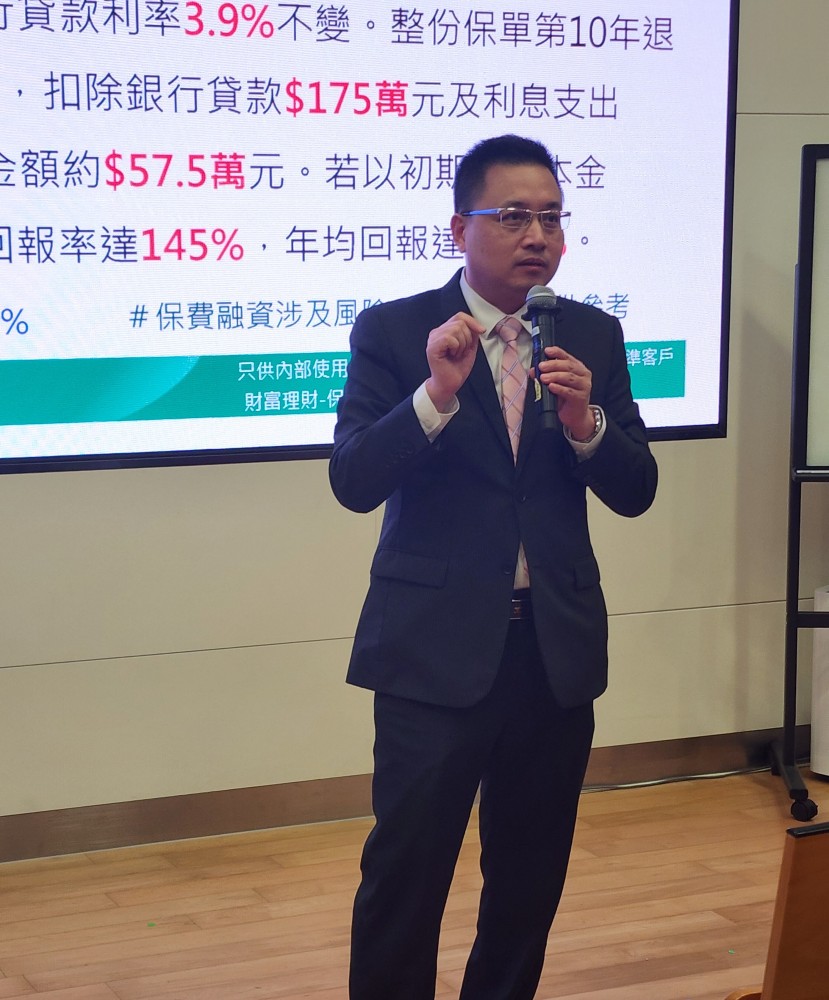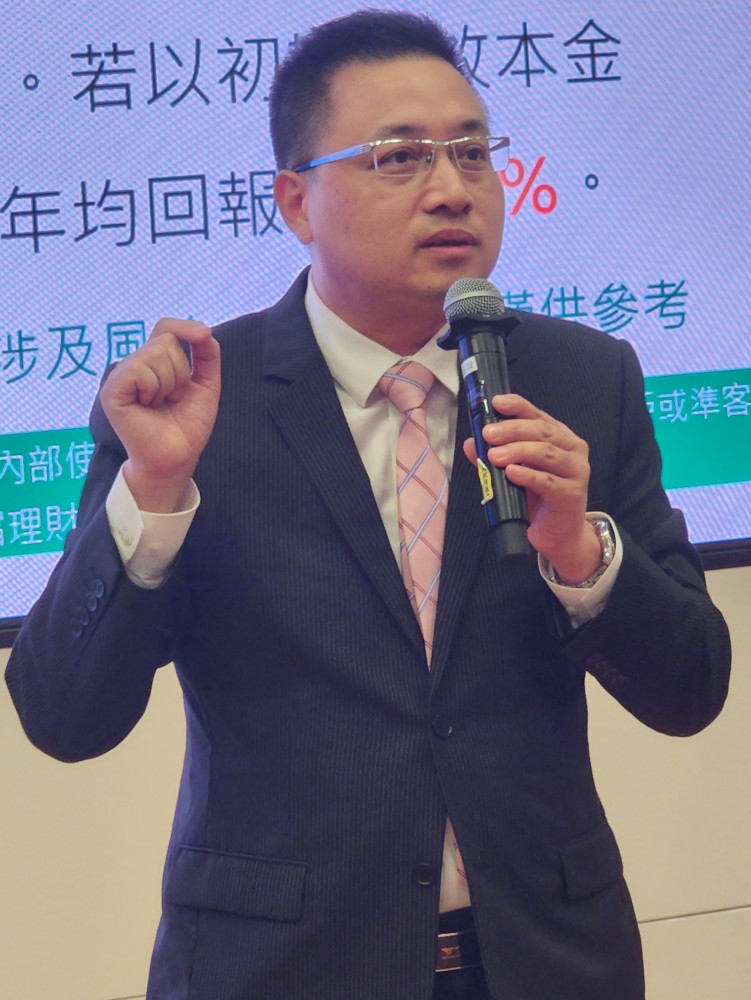On 27 April 2023, the Faculty of Finance of the City University of Macau held the Finance Seminar Series [28] China Life – GuangFa Bank Joint Lecture at the Ho Yin Convention Centre. Mr. Steven Lo, Training Manager of Personal Agent Department of China Life Insurance (Overseas) Company Limited Macau Branch, was invited to deliver a speech titled “Wealth Management – Premium Financing Sharing Session”. Guests attending this seminar include Mr. Paul Chan, Head of the Personal Agent Department and Mr. Chaohui Jin, Senior Branch Manager, China Life Insurance (Overseas) Company Limited Macau Branch; Dean Adrian Cheung and Associate Dean Eva Khong of Faculty of Finance, City University of Macau.
Mr. Steven Lo first pointed out that during the 14 years of extremely-low interest rate period, many new financial demands and opportunities appeared in the market, which also led to the further improvement of investors' financial concept and risk awareness. Extreme-low fixed-interest returns make customers more eager to pursue products with higher potential returns, such as stocks, funds, real estate, etc. Meanwhile, the extreme-low interest environment for a long time also creates new demands and provides conditions for customers in financial management. The extended period of extreme-low interest rates has provided an opportunity for financing conditions to amplify asset appreciation through leveraged transactions. Under this period, premium financing has become one of many ways to financing financial instruments, allowing customers to more easily access cash flow and recover the principal plus some interest income when the policy matures. The advent of extreme-low interest rates has presented many new opportunities in the market, and financial planners need to better understand market trends to provide their clients with the best investment advice.
Mr. Lo then introduced the concept of premium financing. Premium financing refers to the policy holder's pledge of an approved insurance contract to a financial institution as collateral. Based on the valuation of the collateral, the financial institution grants part of the loan to the insured for the purchase of the policy. For example, if the required premium is $100, the insured person will pay 20% in advance. The remaining 80% is paid in full by the loan, the policy is approved to generate dividends, the financing also generates interest, from which the policyholder earns a positive interest margin. In short, premium financing refers to borrowing money from the bank to take out insurance. The customer pays the premium of the life insurance policy with the loan, and transfers the policy interest to the bank as collateral for the loan. He also pointed out that the form of premium financing is similar to that of setting up mortgages in that both offer a lower principal in exchange for a higher expected return.
Then, Mr. Lo explained the reasons for premium financing, including maintaining flexibility and seeking more returns. Premium financing allows customers’ insurance policy to be mortgaged to the bank for a rainy day when they need cash. Comparing between premium financing and no premium financing, both customers have the same product and the insurance policy provides the same protection and return. However, the actual principal expenditure will be greatly reduced after financing. In the low-interest rate environment, premium financing uses leverage effect to earn the difference between the policy rate of return and the loan interest rate. The interest calculation of the loan is similar to that of property mortgage. It is usually calculated by deducting a fixed interest rate from the prime rate. Principal and interest are to be recovered in one lump sum at maturity of the policy.
Lastly, Mr. Lo shared the financial requirements and related risks of premium financing. Premium financing used to be available only to private banks for customers who could afford to buy large amounts of insurance. In the era of extreme-low interest rates, on the one hand, banks want to expand more business, and at the same time, retail customers have a great demand for financial products with high potential returns due to extreme-low deposit rates. As a result, premium financing has also been extended to the level of retail banks in recent years, and loans of as low as 1 million yuan are introduced to enable general retail customers to participate. On the other hand, when financing loans are added to insurance products, they involve financial leverage, relevant insurance is no longer just a simple insurance product and belongs to investment and finance products, in which not only returns are amplified, but also risks. Meanwhile, if customers choose to take out insurance through financing, insurance companies and banks have higher requirements on customers' financial strength and sources of funds.
At the end of the sharing session, students took this valuable opportunity to actively pose questions related to insurance premium financing, and Mr. Steven Lo answered in detail. In the Seminar, the students paid attention to the fact that insurance premium financing is a financial arrangement rather than a financial product, and gained a lot through the financial seminar series. The students also expressed their expectations for the sharing of the next finance seminar.



